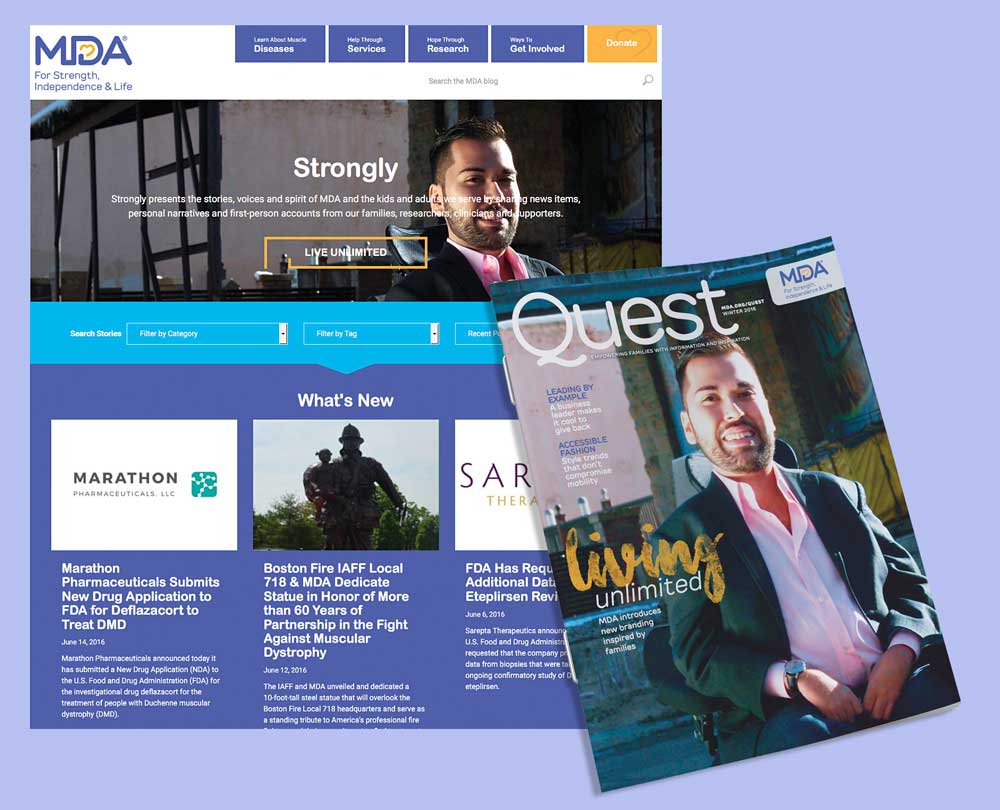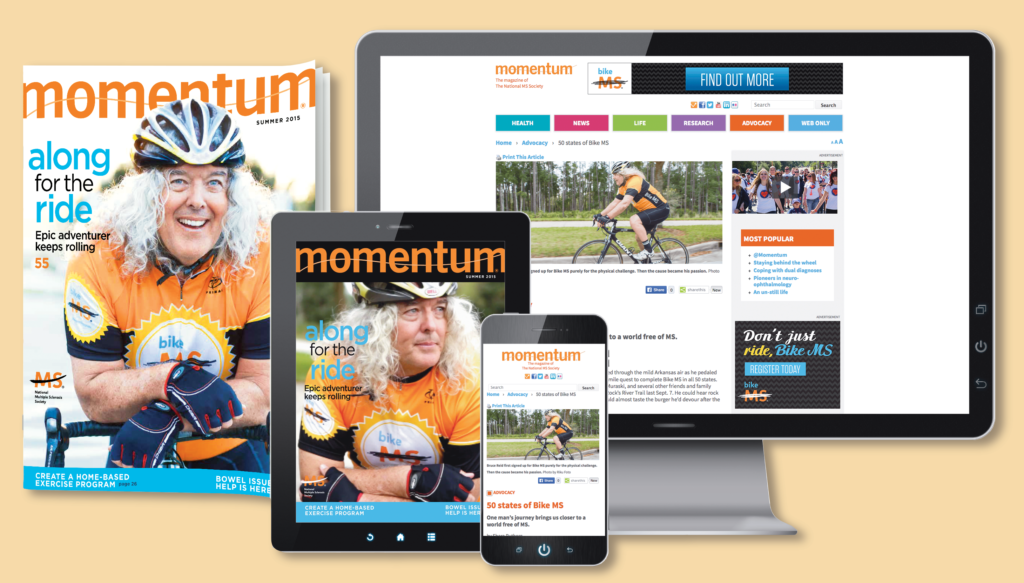
Turn Your Publishing Expertise Into Content Marketing Magic
Publishers are exceptionally well positioned to practice content marketing. After all, the now-popular strategy was born as custom publishing.
By Amy Bernstein
Content marketing” is fast becoming a buzzword and losing some of its clarity along the way. That’s unfortunate, because it’s worthy of your notice. It isn’t something that only big-budget brands are doing. And it’s not just for marketers, either.
PUBLISHERS INVENTED CONTENT MARKETING
As a publisher, you are exceptionally well positioned to practice content marketing — whether for the benefit of your own organization or for your advertisers, sponsors, and underwriters. Really, content marketing was born as custom publishing. It takes that practice to its next logical step, leveraging content in a variety of forms to reach an audience through various media and to influence their behavior.
“For a publisher, delving into content marketing is rather easy,” says Joe Pulizzi, founder of the Content Marketing Institute (CMI) and author of Content Inc. “The publisher is simply offering the publishing services they do for themselves to their clients. Just about all parts of the process are the same, except for the end measurement. Publishers drive revenue directly from the content in some way (subscriptions or advertising). Marketers drive revenue from selling more products and services. That’s literally the only difference.”
If you haven’t added content marketing to your repertoire, you may be missing opportunities to benefit your organization by making it more influential; enabling it to better fulfill its mission; making your sponsors, advertisers, or underwriters more effective; or generating new revenue. That’s worth considering, isn’t it?
BUILDING BRAND MAGNETISM
Brand awareness is the only way people know that an organization exists. But, awareness is the barest beginning for a brand. All sorts of organizations — from global conglomerates to local nonprofits — are finding that content created in alignment with their brand can cut through the cluttered media landscape to attract and engage an audience. When this is done well, it builds brand affinity.
As a publisher, you have an audience. You already know what kind of content your readers want and how to reach them — in print, digital, and mobile. Chances are, plenty of organizations would jump at the opportunity to partner with you to reach that audience and may prefer to do it through custom content rather than advertising.
For content marketing to work, though, the content must be valuable, relevant, and consistent. Content marketers need to ensure that each piece is geared to what the audience finds useful. Is it information that will make them a smarter shopper or better at their jobs? Does it help them connect with others who have the same interests or experiences? Or does it fulfill their craving for entertainment? The best and most well-received content is actionable for the intended audience. And that quickly kicks listicles and similar shallow content to the curb. As a publisher, you understand substance, which is the foundation of good content marketing.
For example, the National Multiple Sclerosis Society (NMSS) invests in content because it recognizes that education and a sense of community are valuable to its audience. “What really drives us is ensuring that we are providing people affected by MS with the resources and information that they need to live their best lives,” says Meghan Finn, vice president, brand and communications. By doing this consistently, NMSS has built the largest MS-related content marketing program in the world. (See Case Study: Building on a Trusted Brand.)
And consistency? “Most marketers run their content marketing programs as campaigns, which is why they usually fail,” says Pulizzi. “To create a loyal audience … we need to deliver ongoing content experiences to the readers.” This is, of course, what publishers do all the time.
CASE STUDY: Strategic Start

When Eric Rayvid joined Best Friends Animal Society as director of public relations and content marketing, the organization had great content assets but wasn’t doing much to determine the value its content was providing. Rayvid’s first order of business was to conduct baseline studies. Now, the organization’s data confirms that its efforts are helping to build trust with its audience and quarter million members worldwide. Best Friends was named Animal Welfare Nonprofit Brand of the Year and the Most Trusted Brand in the 2016 Harris Poll EquiTrend® Study.
EFFECTIVE UNDERWRITING
Any advocacy organization can tell you that compelling stories drive grants, donations, and other support. With the freedom to use a wide variety of formats and distribution channels, content marketing provides a platform to tell these stories — in a way that most advertising can’t even attempt.
Best Friends Animal Society, an advocacy group and sanctuary for pets needing adoption, took a simple, visual approach — in fact, just one image — to tell a story. In spring 2015, it launched “Purritos,” filling its social media channels and running a guerilla postering campaign with the image of a trio of sleepy kittens swaddled like tiny burritos. Accompanying text explained that during the warm months, more kittens are born than shelters can accommodate and subsequently many are euthanized. “We went cute to tell a really tough story,” says Eric Rayvid, Best Friend’s director of public relations and content marketing.
The image was passed around on social media and picked up by mainstream news outlets. Simple, targeted campaigns that touch the heart, like Purritos, are part of the reason Best Friends saw a 67 percent increase in individual and corporate donations over the past fiscal year. (See Case Study: Strategic Start.)
WHAT DO YOU CHAMPION?
Think of content marketing as a handshake agreement. You’ll provide content that improves people’s lives. In return, they’ll expect to receive relevant marketing messages from you, aligned with their particular interests. And if you give them something more than a just good read — like a community built around shared experiences or interests — they’ll often go a step further and promote you to others.
The Muscular Dystrophy Association (MDA) knows that active members become advocates. It uses content not just to fulfill its mission of supporting people with neuromuscular diseases, but to give its members a voice.
CASE STUDY: Listening

Before MDA launched a major rebrand at the beginning of 2016, it conducted a benchmark brand health study to determine brand awareness and perception, and did extensive market research to learn what its audience wanted and needed from MDA. After the non-profit launched its new logo, website, and blog, it saw a 92 percent positive reaction on social media; a 17 percent increase in visitors to mda.org; and social media engagement from about 100,000 people, including celebrities and other “influencers.”
“Every month, we’re looking at what’s engaging people and what’s not,” says Jesica D’Avanza, vice president, marketing communications and brand management at MDA. One thing that consistently works, she’s found, is publishing blog posts and articles written by MDA members. “Our audience wants to hear from people like them who understand what they are going through,” she says. “Our audience’s voice is always going to be stronger than our own.”
By tapping into the expertise of its own members, MDA is filling its content pipeline while empowering the people it serves to become advocates for its cause. (See Case Study: Listening.)
MONETIZING
Advertisers know that an engaged audience is more likely to buy what they’re selling. But, how can you engage an audience in today’s world of ad fatigue and banner blindness? By providing appealing, useful content sponsored by your advertisers — in place of the stuff readers ignore.
A few years ago, The Daily Beast, a news website focusing on politics and pop culture, concluded that banner and pop-up ads, the common currency in online advertising, were annoying for readers. “Creating a positive experience for our readers is the most important thing we can do,” Daily Beast President Mike Dyer explained. The publisher turned to content marketing to generate revenue while keeping readers engaged. For example, they created a series of summer-themed articles sponsored by Lexus — one of which, a list of beach reads, was shared more than 14,000 times.
Content marketing can also be used to bolster conventional advertising. In 2015, the Council of Residential Specialists began building sustained content marketing efforts around its core publication, The Residential Specialist. This involved establishing a stronger brand voice, redesigning the magazine as a better resource, leveraging useful information available through its affiliates, and adding a website and e-newsletter. The expanded and revitalized content was well-received by advertisers, who saw The Residential Specialist as a way to reach their target audience. Annual advertising revenue from the magazine’s Marketplace section increased 300 percent over the previous year.
CASE STUDY: Building on a Trusted Brand

NMSS has been publishing a quarterly magazine since the 1990s as part of its mission to help people who are living with MS to live better, fuller, and richer lives. In 2012, NMSS enlarged Momentum into an expansive cross-media program. The redesigned magazine interfaces with a tablet app and website, enabling integrated links, videos, and web-exclusive content. The site averages 6,800 users/month, and the app has been downloaded over 20,000 times.
GET STARTED WITH A STRATEGY
In a survey of B2C marketers, CMI found that 63 percent do not have a documented content marketing strategy. For nonprofit marketers, that number is 75 percent. And, CMI data also shows that, year over year, marketers who document their content marketing strategy are more effective with the effort than those who don’t. It’s about knowing where you’re going.
There is no one template for building a content marketing strategy, because each must be unique to the business and customer needs it serves. However, we (and others) believe that it will include at least the following elements:
- A written plan, including goals and the value you intend to provide through content. These should be measurable in tangible results, both in terms of time and money, for you and your client.
- A clear description of the audience for whom you will create content. One of the best ways to do this is by creating an avatar (or avatars) that embody your audience. Humanizing those you’re speaking to will help you create real, two-way communication.
- A brand promise and story that capture the ideas and messages you plan to communicate, and why they will be helpful, useful, timely, credible, actionable, and generous.
- A channel plan that details the platforms you will use to tell the story, the structure of content for each one, and how they are intended to work in concert.
This type of clear and defined strategy will enable you to look back in six to 12 months and identify whether your efforts are creating tangible returns for both you and your audience.
Content marketing is more than a buzzword or passing fad — at least for those who do it well. Publishers who can leverage their expertise and systems to provide substantive content that resonates with distinct audiences will find that content marketing can have lasting, profitable value.
Amy Bernstein is a senior managing editor at GLC, a marketing communications agency. She has more than a decade of experience working with association magazine publishers and doing custom publishing and content marketing. Connect at tinyurl.com/linkedin-bernstein.



